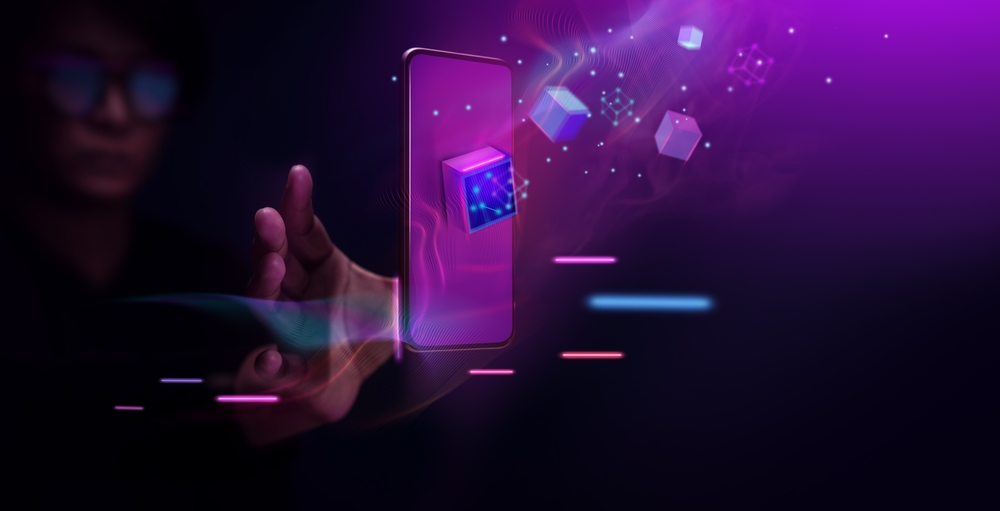Non-fungible tokens and their underlying technologies have dramatically increased the market value of digital assets. Digital assets such as JPEGs and PNGs are selling for millions of dollars, traditional businesses are accepting payments through NFTs and cryptocurrencies, and brands are looking for new ways to use NFTs.
Driven by these changes, the NFT market has expanded to reach a market capitalization of $23 billion last year, according to data provided by DappRadar. NFTs are gaining immense popularity due to their complex value in the metaverse of projects that most brands are investing in.
From gaming to art to e-commerce, every industry has begun to venture into the metaverse horizon to allow their audiences to explore their specific products and services in a real-time, 3D immersive parallel universe. So, how can a brand better showcase its products and services in the metaverse using NFTs? This is where the NFT market comes in handy.
What is the NFT metaverse marketplace?
As the name suggests, nft metaverse marketplace is a technical concept for creating and integrating NFT marketplace Development into the virtual space of the metaverse. The Metaverse is considered a parallel universe where avatars (representing the users’ unique personality) can perform actions similar to the real world. Thus, in the metaverse, avatars can communicate, work, travel, organize and attend live events, play games, engage in trading, and engage in many other adventures. However, metaverse trading is a more common activity.
To facilitate trading, brands need to create a feature-rich nft marketplace and integrate it into their Metaverse projects, allowing the masses to tokenize and trade their digital assets seamlessly. Metaverse nft trading platforms are built on the blockchain ecosystem, which provides a decentralised experience for users.
Due to compatibility issues, nft marketplaces have not been able to gain mass adoption across industries. Now that third-generation interoperable blockchains such as Polkadot and XDC Network are facilitating the development of cross-chain NFT marketplaces within their ecosystem, businesses can enable their audience to leverage cross-chain NFT trading and reach a wider audience.
What makes the best Metaverse NFT marketplace?
Below are the most requested features that make the NFT metaverse market future-ready and capable of achieving global mass adoption:
Shop
The Metaverse NFT marketplace operates similarly to an e-commerce website or trading platform. Therefore, it must offer an attractive and intuitive storefront for users that provides users with a wide range of details such as product listing, NFT ownership details, preview and price history. With this information, users can quickly verify the authenticity of digital assets before purchasing.
Decentralization
The decentralized infrastructure of the NFT market eliminates the need for any intermediaries in the trading and settlement process. These marketplaces are governed by blockchain technology, where events are automatically executed through smart contracts and information is stored on a distributed ledger in metadata. Moreover, blockchain-based NFT marketplaces are reliable in terms of security and speed.
Compatibility
Interoperability provides the Metaverse NFT marketplace with cross-chain interoperability. It is an important element that connects various independent marketplaces, providing users with a unified experience and allowing them to explore various independent marketplaces and participate in their socio-cultural activities without any restrictions. One of the famous NFT projects, Decentraland, has started working on interoperability to make its services more relevant to other projects in the metaverse.
3D immersive environment
The Metaverse NFT marketplace must offer a realistic, immersive 3D environment that allows users to communicate and engage in trading activities in a highly interactive environment. Next-generation tools like Unreal Engine and Unity give developers everything they need to create more realistic NFT marketplaces Development solutions for the metaverse.
Seamless tokenization
The standard Metaverse NFT marketplace is designed to provide instant and seamless asset tokenization for users. By complying with various token standards, a user can tokenize their digital assets to gain unique ownership and trade the assets on the market.
Two-factor authentication
Two-Step Verification ensures users instantly and securely log into NFT marketplaces while protecting user credentials and the resources they access.
Peer-to-peer transactions
A method of recording transactions on a decentralised peer-to-peer network ensures secure asset transactions in the NFT market.
NFT wallets
NFT wallets are integrated into the Metaverse NFT marketplaces to allow users to buy, send and store digital assets, as well as provide connectivity to the metaverse.
Payment gateways
With a full-featured payment gateway, an NFT marketplace can enable a storefront to accept payments in cryptocurrency and native tokens, attracting a wider range of users for mass adoption.
DAO integration
Most Metaverse NFT marketplaces have adopted the DAO model to create an autonomous organization free of any hierarchy. A DAO-enabled marketplace is governed by participants, where all minor or major decisions are made through voting and proposals.
What types of Metaverse NFT marketplaces exist today?
Metaverse Gaming NFT Marketplace
Metaverse games are based on the “play to earn” concept, which continues to generate great passion among players. This overwhelming popularity has prompted many gaming brands to create their own NFT marketplace and attract users with gaming assets, game characters and accessories. Powered by metaverse technology, these marketplaces offer realistic, real-time navigation for everyone.
Real Estate Market Metaverse NFT
The metaverse’s real-estate-based marketplaces regulate events such as real-time buying, selling, and auctions of NFTs. Users can bid on a specific property or even a piece of digital land and pay the price to take ownership. A project like Decentraland is the best example of the NFT real estate metaverse with the most intriguing features and high-priced virtual lands to sell.
Some real estate companies are also displaying an NFT-based digital version of their physical properties in the metaverse, allowing avatars of potential buyers to visit the property, inspect it thoroughly, and purchase; everything is done digitally. Once the contract is fulfilled in the metaverse, the buyers receive ownership of the original property in the real world.
